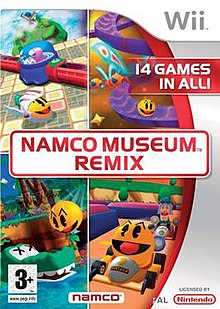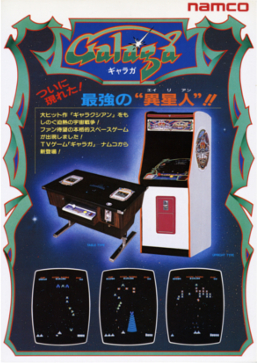
Galaga is a 1981 fixed shooter arcade video game developed and published by Namco. In North America, it was released by Midway Manufacturing. It is the sequel to Galaxian (1979), Namco's first major video game hit in arcades. Controlling a starship, the player is tasked with destroying the Galaga forces in each stage while avoiding enemies and projectiles. Some enemies can capture a player's ship via a tractor beam, which can be rescued to transform the player into a "dual fighter" with additional firepower.

Dig Dug is a maze arcade video game developed by Namco in 1981 and released in 1982, distributed in North America by Atari, Inc. The player controls Dig Dug to defeat all enemies per stage, by either inflating them to bursting or crushing them underneath rocks.

Rally-X is a maze chase arcade video game developed in Japan and Germany by Namco and released in 1980. In North America, it was distributed by Midway Manufacturing and in Europe by Karateco. Players drive a blue Formula One race car through a multidirectional scrolling maze to collect yellow flags. Boulders block some paths and must be avoided. Red enemy cars pursue the player in an attempt to collide with them. Red cars can be temporarily stunned by laying down smoke screens at the cost of fuel. Rally-X is one of the first games with bonus stages and continuously-playing background music.
Namco Museum is a series of video game compilations developed and published by Bandai Namco Entertainment for home video game consoles. The first title in the series, Namco Museum Vol. 1, was released for the PlayStation in 1995. Entries in the series have been released for multiple platforms, including the Game Boy Advance, PlayStation 2, PlayStation Portable, Nintendo DS and Xbox 360. the latest being Namco Museum Archives Vol. 2, released in 2020.

Galaga '88 is a 1987 fixed shooter arcade video game by Namco. It is the third sequel to Galaxian. It features significantly improved graphics over the previous games in the series, including detailed backgrounds, larger enemies and greater ship details. The game runs on Namco System 1 hardware.
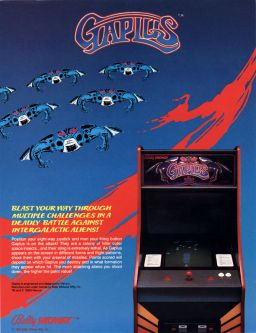
Gaplus is a 1984 fixed shooter arcade game developed and released by Namco. It is the third game in the Galaxian series, serving as a direct sequel to Galaga (1981). In North America, a modification kit was later released to change the name to Galaga 3, possibly to reflect its position in the series. It was the only game other than Phozon to run on the Namco Phozon hardware. A contemporary home port for the Commodore 64 was released in 1988. A "demastered" version of the game was included in Namco Museum Archives Vol. 2 as a bonus title.
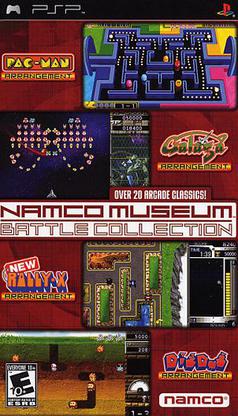
Namco Museum Battle Collection is a 2005 video game compilation developed by Tose and published by Namco for the PlayStation Portable; the first Namco Museum since the PS1 series to be developed in Japan. It includes 21 games - four of these are brand-new "arrangement" remakes of older Namco games, while the rest are emulated ports of Namco arcade games from the 1970s and 1980s. These ports include an options menu that allows the player to modify the in-game settings, such as the screen orientation and number of lives. Players can send one-level demos to a friend's console via the "Game Sharing" option in the main menu.

Grobda is a 1984 multidirectional shooter arcade video game developed and published by Namco. It is a spin-off from Xevious, as the player's tank first appeared in that game as an enemy. It runs on Namco Super Pac-Man hardware but with a video system like that used in Mappy and The Tower of Druaga, and it also uses a DAC for the "Get Ready" speech sample at the start of each round.
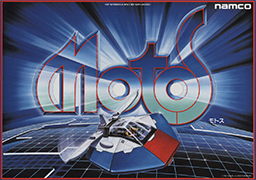
Motos is an arcade game that was released by Namco on September 20, 1985. It runs on Namco Super Pac-Man hardware but with a video system like that used in Mappy, The Tower of Druaga, Grobda and Dig Dug II.
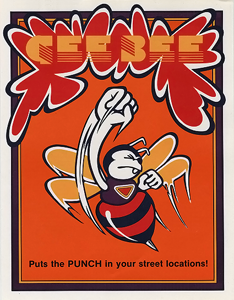
Gee Bee is a block breaker/video pinball hybrid arcade game developed and published by Namco in 1978. The player controls a set of paddles with a rotary knob, with the objective being to score as many points as possible by deflecting a ball against bricks, pop bumpers and other objects in the playfield. It was developed by Toru Iwatani, known as the creator of Pac-Man and Pole Position. Outside Japan, it was published by Gremlin Industries.

Cutie Q is a 1979 block breaker/video pinball hybrid arcade game developed and published by Namco in Japan. The player controls a set of paddles with a rotary knob, the objective being to score as many points possible by deflecting a ball against blocks, ghosts, spinners and other objects on the playfield. It was designed by Shigeru Yokoyama, with spritework done by Toru Iwatani. It is the third and final game in the Gee Bee trilogy.

Namco Museum DS is a 2007 video game compilation developed by M2 and published by Namco Bandai Games. The game features 7 arcade games previously published by Namco along with a Nintendo DS version of the Nintendo-developed title Pac-Man Vs.
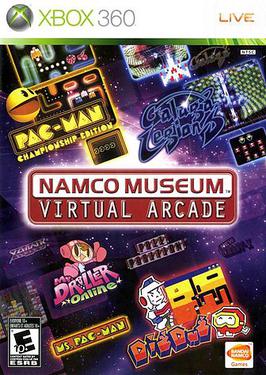
Namco Museum Virtual Arcade is a video game compilation developed and published by Namco Bandai Games for the Xbox 360. It was released in North America in 2008 and in Europe and Japan in 2009. Part of its Namco Museum series, Virtual Arcade includes 34 titles; nine of these are Namco Bandai-published Xbox Live Arcade games, and the rest are arcade games that are only accessible through the disc. Players can access the Xbox Live Arcade games through their dashboard if the disc is in the console.

Pac-Man Party is a party game by Namco Bandai Games for the Wii and Nintendo 3DS. It is similar to the Mario Party series and Monopoly games for the Wii. In the game's story mode, players must retrieve a stolen cookie recipe from Pac-Man's enemies Blinky, Pinky, Inky, and Clyde and return it to its rightful owner, Mr. Cookie. The game was released to coincide with Pac-Man's 30th anniversary. The game notably features redesigns of the main characters which would carry over to following Pac-Man titles in the mid-2010s, culminating with Ghostly Adventures.
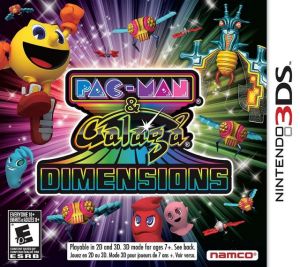
Pac-Man & Galaga Dimensions is a 2011 video game compilation developed and published for the Nintendo 3DS by Namco Bandai Games. It contains six games from the company's Pac-Man and Galaxian franchises—Pac-Man (1980), Galaga (1981), Pac-Man Championship Edition (2007), Galaga Legions (2008), Pac-Man Tilt, and Galaga 3D Impact, the last two being unique games created exclusively for this collection. The collection also includes achievements, online leaderboards, and a trailer for the Pac-Man and the Ghostly Adventures television series.
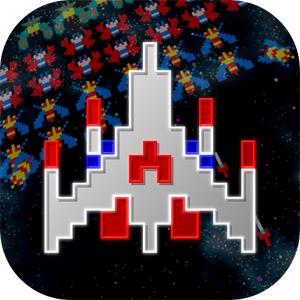
Galaga Remix is an iOS game based on Galaga released in 2009 by Namco Bandai games. It is a compilation title featuring the 1981 arcade shooter Galaga and the Namco Museum Battle Collection version of Galaga Arrangement, though the game is titled Galaga Remix. The games play identical to their original counterparts, with controls being adapted for touch screens, however the compilation lacks the 2-player modes from the original games.
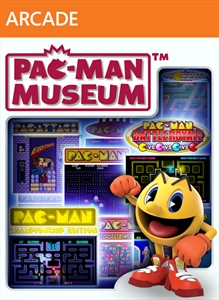
Pac-Man Museum is a 2014 compilation title developed and published by Bandai Namco Entertainment under the Namco label. It is a compilation of 9 Pac-Man games, with additional features such as achievements and online leaderboards.

Pac-Man Museum+ is a 2022 compilation video game developed by Now Production and published by Bandai Namco Entertainment. Being a sequel to the 2014 compilation title Pac-Man Museum, Pac-Man Museum+ includes 14 games from the Pac-Man series, with additional features such as missions and online leaderboards.
